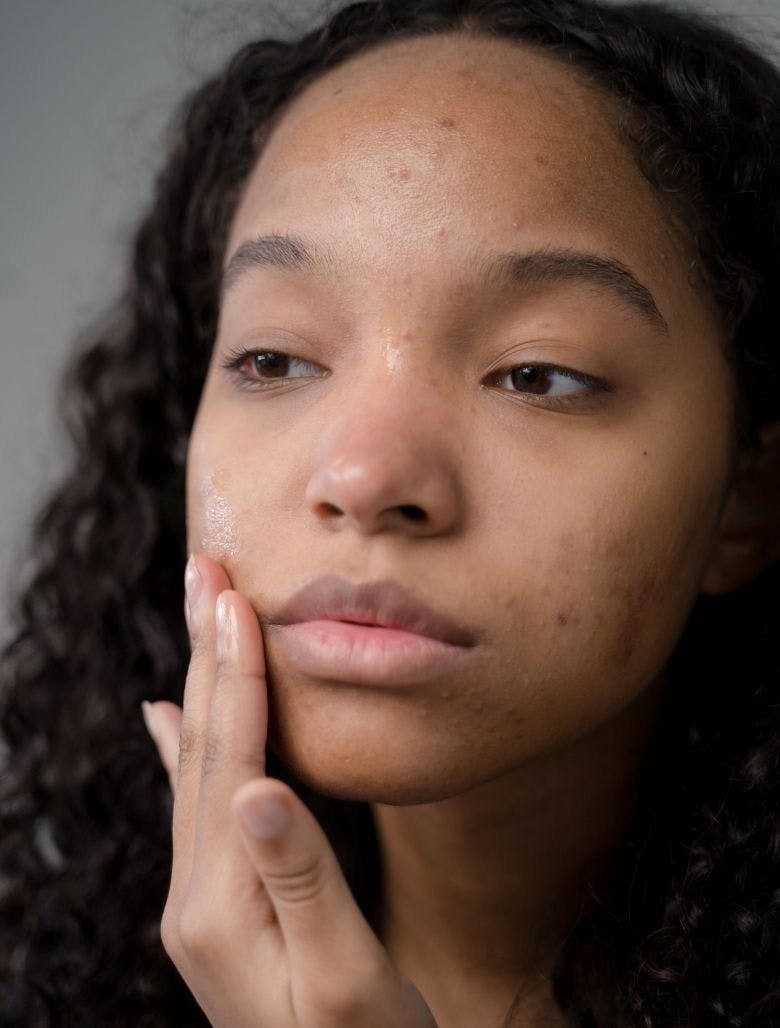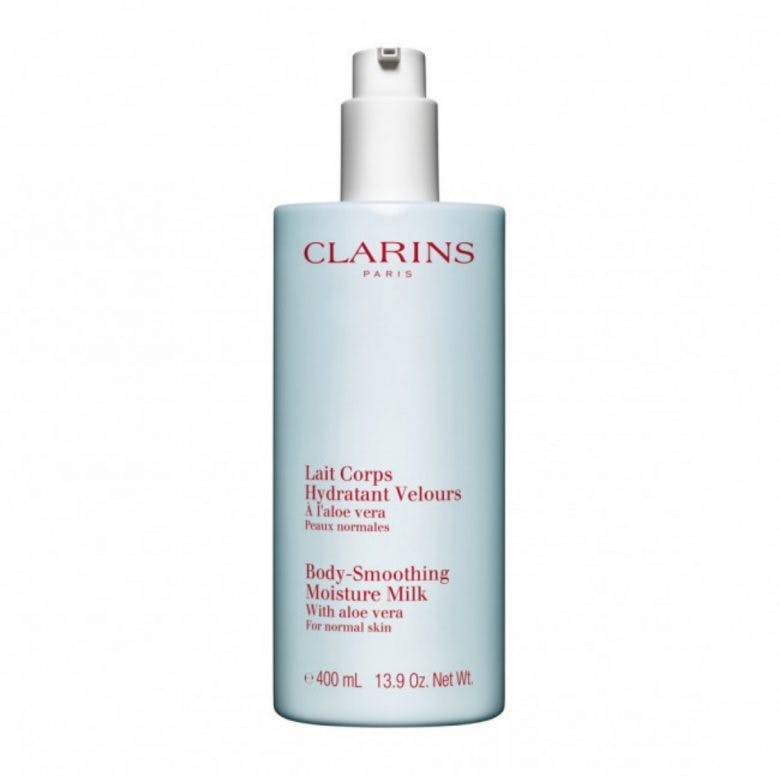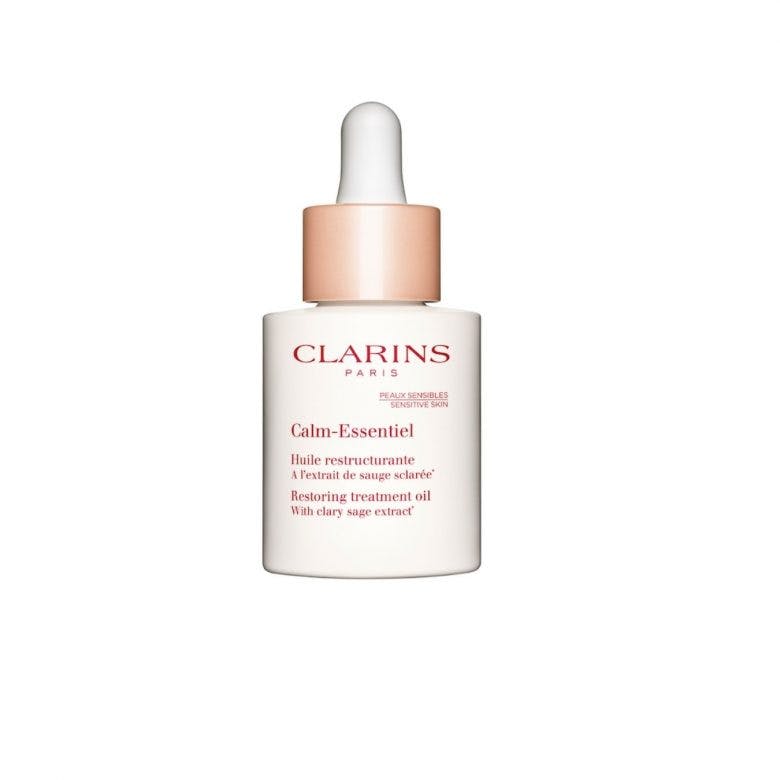7 Common Skin Conditions And How To Treat Them
11 minutes read
There’s no such thing as perfect skin. But some skin conditions hit us harder: flaky and itchy skin is unbearable; severe acne brings so much discomfort; hyperpigmentation – well, don’t even get us started.
These common skin conditions cause distress for most of us, with experts saying skin conditions rank fourth leading cause of nonfatal disease burden.
It affects us in many ways, both physically and mentally, emotionally and financially.
We explain the seven most common skin conditions experts see and proven ways to treat or tame them.
1. Acne

What is Acne?
Acne is a common skin condition that affects 95% of people aged 11 to 30. It can take several forms like non-inflammatory pesky blackheads and whiteheads and the mild tiny red dots known as pimples.
Then there are pustules (zits with pus) and the severe ones, cysts and nodules. This unsqueezable acne resides deep in the skin and requires a visit to the derm. The causes are varied and brought on by a series of factors from hormonal imbalance and diet to lack of sleep, improper skincare routine and stress.
How to treat it?
Topical solution:
“Treatment depends on the acne severity,” says Dr Gabriela Petrof, MBBS, PhD, NHS Consultant Dermatologist.
She advises: “People who suffer from mild acne can get topical combinations of benzoyl peroxide with adapalene, retinoids with or without topical antibiotics.”
For zit zap emergencies, we love CLEAR-OUT Blemish Targeting Gel. It has blemish-busting salicylic acid to remove any swelling and meadowsweet extract to clear clogged pores.
Dr Petrof suggests taking “oral antibiotics with topical azelaic acid” for people with moderate acne. For severe acne with scarring, “oral isotretinoin” can be considered along with derm-based laser treatment.
Dietary solution:
Nutritionists suggest adding more nutrient-dense food: load more antioxidants, fruits and veggies. In short, eat a “rainbow” diet. This Nutritionist-Approved Guide To Clean Eating will come in handy. Remove food high in fat, sugar and dairy. These increase sebum production in people with oily skin.
Know what kind of acne you’re dealing with and what causes them? Here’s a detailed expert guide on How To Treat Acne Breakouts
2. Eczema
What is Eczma?
In the UK alone, eczema affects up to 20% of children and 10% of adults. It’s an inflammatory skin condition that causes dry skin, itchy skin, rashes, scaly patches, blisters and skin infections. Itchy skin is a common symptom of eczema.
Atopic eczema (atopic dermatitis) is the most common form among the seven types.
While the exact cause is unknown, researchers from the National Eczema Association say people develop eczema because of genetic predisposition and environmental triggers. So, it’s either you’re born with it or caused by what you constantly expose yourself to.
How to treat it?
Topical solution:
Dr Petrof advises: “Applying frequent topical emollients and using soap-free products are the mainstay of treatment. Identification and avoidance of triggers are also important.”
People with eczema could benefit from the richness of Shea butter. Shea butter, an emollient, is proven to have efficient anti-inflammatory properties which help calm down any dryness, redness, or flakiness of the skin.
We are a fan of the emollient-rich Body-Smoothing Moisture Milk. A plethora of soap-free cleansers would work too. Look for ones that contain shea butter or oat extract.

Beauty Daily recommends a gentle cleanser loaded with AHAs like Gentle Renewing Cleansing Mousse.
Dr Petrof advises: “For mild eczema, mild potency topical corticosteroids are required. For moderate to severe eczema, a moderate and higher potency topical corticosteroids are often recommended.”
Food allergies and environmental triggers should also be observed in children under the age of two.
“For eczema sufferers who are not responding to any topical treatment, oral immunosuppressants or phototherapy should be considered. Nowadays, targeted treatments such as Dupilumab are licensed from the age of six years and older,” she says.
Dietary solution:
Food wise, Ro Huntriss, London-based consultant dietitian and nutritionist, advises: “People with eczema should consider stocking up on foods with anti-inflammatory properties such as sources of omega-3 fatty acids (salmon, mackerel, sardines). Along with fruits and vegetables, whole grains and healthy fats such as extra virgin olive oil and avocados are proven to help reduce eczema symptoms.”
3. Rosacea
What is Rosacea?
Constant rosy cheeks. People who have rosacea can cause persistent blushing or flushing in the face.
“A substantial proportion of the patients I see have rosacea. This is a chronic condition with a significant psychological impact.
Rosacea is commonly characterised by background inflammation (affecting the forehead, nose, cheeks, chin); some patients also experience spots/bumps in the centre portion of the face,” Dr Alia Ahmed, NHS Consultant Dermatologist explains.
The British Skin Foundation reports that rosacea affects fair-skinned people but may affect all skin types in people aged 40 to 60.
“Rosacea can be difficult to diagnose in melanin-rich skin. This is because the widely recognised symptoms of ‘flushing’ or ‘redness’ look different in pigmented skin,” Dr Ahmed adds.
Signs and symptoms include sensitive skin (i.e., sensitive or reacts easily to skincare products); feelings of burning, stinging or hot/warm skin, dryness, or oiliness in the skin, and pus-filled spots/pimples (acne-like breakouts).
Like eczema, the cause of rosacea is not fully understood. However, genetics, immune system factors, and environmental factors are contributing factors.
Common triggers are sunlight, stress, anxiety, exercise, changes in temperature, spicy food, or alcohol and for women, hormone imbalances act as a trigger.
How to treat it?
Topical solution:
Dr Ahmed says: “Management of rosacea is complex, it is usually a combination of medical, skincare, lifestyle and psychological management.”
For topical treatment, she recommends:
- Antibiotic creams to reduce inflammation
- Azelaic acid to reduce redness and inflammation
- Oral antibiotics to be used at low doses as an anti-inflammatory
- Topical alpha-agonist gel which narrows blood vessels to reduce redness temporarily
- Topical retinoids can be used with caution as anti-inflammatories to treat rosacea
As for the skincare routine, Dr Ahmed says, “It typically includes gentle cleansers to wash the face, mineral sunscreen, and light moisturisers. Having rosacea can make skin feel dry, which leads some people to over moisturise and aggravate inflammation.
Fragrance-free and non-comedogenic formulas are preferred. Supporting the skin barrier is important; look for serums/light creams with hydrating qualities (e.g., hyaluronic acid).”
Beauty Daily recommends Clarins Calm-Essentiel Range. It is tailored for people with weakened and compromised skin like rosacea.
Plant active clary sage extract is clinically proven to reduce skin sensitivity to irritants, while vegetable squalane reinforces the skin and protects it. Both soothe, repair, and hydrate sensitive skin, increasing its tolerance.

Calm-Essentiel Restoring Treatment Oil is an excellent addition to your sensitive skincare routine. This is an intensive treatment for 10-20 days, depending on your needs. 90% said the treatment oil helped with the skin’s restructure.
Learn How To Build Sensitive Skincare Routine That Works According To Experts
Dietary solution:
If you are suffering from rosacea, Huntriss says, “It’s best to avoid spicy foods, hot drinks, cinnamaldehyde-containing foods such as tomatoes, citrus fruits, chocolate, and histamine-rich foods such as aged cheese, wine and processed meats as these can be common triggers.”
It can be hard to keep track – so keep a food diary and a record of any meals that trigger and eliminate them from your diet accordingly. Make sure to do this under the guidance of a healthcare professional to avoid any nutritional deficiencies.
Avoid alcohol, especially red wine. The National Rosacea Society found that certain types of alcohol trigger rosacea more than others. 76% of respondents reported that red wine worsened their skin condition.
Need help? Book an online consultation to receive product advice and recommendations on putting together a personalised routine.
4. Perioral Dermatitis
What is Perioral Dermatitis?
Another common skin condition is Perioral dermatitis (POD). Experts say it is an inflammatory rash involving the skin around your mouth but may spread to your nose or eyes.
Dr Ahmed explains: “Inflammation around the hair follicles and blood vessels leads to small spots around the mouth, nose, and eyes. The exact cause is unknown but includes genetic, hormonal, and environmental factors.
Spots around the mouth can flare with your menstrual cycle, irrespective of the cause. For example, people with common skin problems like acne and rosacea (that can present as spots around the mouth), report flares at certain times of their cycle, suggesting hormonal influences,” she explains.
How to treat it?
Dr Ahmed suggests using azelaic acid, which acts as an anti-inflammatory and helps to unclog pores. Topical antibiotics are commonly used: metronidazole, clindamycin, and erythromycin. Oral antibiotics longer courses are typically required (3-6 months or longer), and all need to be prescribed by your GP or dermatologist.
5. Seborrheic Dermatitis
What is Seborrheic Dermatitis?
This condition presents as flaky skin, sometimes on a red base, in the scalp, eyebrows, around the nose, and on the chest. Because it looks like “dry skin,” many people try to calm it with moisturiser, which is the opposite of what should be done.
“Seborrheic dermatitis is a reaction to the oils in the skin combining with the normal bacterial inhabitants of our skin, which then causes irritation and inflammation,” says Dr Ellen C. Gendler, Board-Certified Dermatologist and Clinical Associate Professor of Dermatology at NYU Langone Medical Centre in NYC.
Experts also call it dandruff, cradle cap, seborrhea, seborrheic eczema, and seborrheic psoriasis. The skin condition sometimes clears up by itself. But often, it’s a lifelong issue that clears and flares but can be managed with good skincare.
How to treat it?
Experts say common triggers include stress, hormonal changes or illness, and harsh detergents, chemicals, and soaps.
Dr Gendler recommends washing hair daily and washing the face twice daily, preferably with a sulphur-based cleanser, which is extremely helpful.
Sulphur has proven anti-bacterial and anti-inflammatory properties. In skincare, it works best to absorb excess oil and dry out the skin’s surface.
“Avoid creamy cleansers and oils, as well as heavy moisturisers. Sometimes, a mild corticosteroid cream can be prescribed for a quicker resolution, and an anti-fungal cream like Lotrimin or Ketoconazole cream can be used for maintenance treatment,” Dr Gendler advises.
6. Dry heels

What are Dry Heels?
Dry heels are a widespread skin condition that affects us all. 90% of UK women have foot problems, and the College of Podiatry reveals that 45% of women suffer from painful cracked heels. No wonder Dr Gendler sees this as so common to her patients.
“While this is a problem we often see in the winter, it occurs all year round. It is important to remember that the skin on the feet takes quite a beating, and it thickens to protect itself and your underlying bone structure.
Constantly buffing and scrubbing the soles is not the answer, though many people do this! The vigorous paring of the soles leads to worse thickening because the skin constantly believes it needs to.” she explains.
How to treat:
New York-based dermatologist Dr Gendler recommends foot creams once or twice a day that contains lactic acid or urea in an emollient base. You will need to go through a week or so when your heels seem even more cracked and dry, but once the habit of using creams there sets in, you will be so happy.
Try: Clarins Foot Beauty Treatment Cream is formulated with emollient-rich shea butter and anti-fungal arnica extract and virgin cashew nut oil, which all work to renew and protect from ankle to toe.
Read next: Easy Ways To Get Rid Of Dead Skin From Your Feet
7. Hyperpigmentation

What is Hyperpigmentation?
“Hyperpigmentation is when certain areas of your skin are darker than the rest. There are multiple causes known for triggering hyperpigmentation: sun exposure, irritation from skincare products, melasma, the ageing process, inflammation on the skin, and allergic drug reaction to other very rare medical conditions,” says Dr Anastasia Therianou MD, PhD, London-based NHS consultant dermatologist.
Age spots, also called sunspots, are the most common type of hyperpigmentation. Age and sun are both common reasons someone may develop this condition.
While melasma is prevalent amongst pregnant women. Dr Therianou explains: “Melasma is caused by combined hormones, genetics, pregnancy, and sun exposure.” It is usually not a long-term skin condition and fades within a few months of delivery.
How to treat it?
Topical Solution:
To prevent hyperpigmentation from worsening or, better yet, from happening, make sure to use SPF, reapply every two hours and stay out of direct sunlight.
Dr Therianou adds: “Creams under prescription with an active ingredient called hydroquinone, and some chemical peeling also help.” Some professional treatments like lactic acid peels and IPL skin rejuvenation as maintenance to prevent worsening pigmentation visibility are also an option.
Bright Plus Advanced Dark Spot-Targeting Serum is an excellent addition in your skincare routine. It is enriched with all the dark spots busting ingredients, such as Vitamin C and new organic sea lily, to fight hyperpigmentation. Retinol is also effective to treat hyperpigmentation. We recommend a plant alternative 40% better than the Vitamin A derivative, Organic Harungana. It is found in Super Restorative products.
Dietary solution:
Several foods have been shown to have a protective impact on the skin, which can hopefully prevent undesired skin colouration and pigmentation changes.
Gail Warren, Nutritional Therapist, and an active member of the British Association For Nutrition and Lifestyle Medicine says:
- Carotenoids, found in dark green leafy greens such as spinach, kale, broccoli, and peas, help filter UV radiation and minimise oxidative stress in the skin, resulting in less discolouration.
- Citrus fruits, including oranges, lemons, and grapefruit, are plentiful in vitamin C, the master antioxidant, and help fight free radicals that will cause damage to the skin from UV overexposure.
- Almonds are particularly healthy for your skin because they include magnesium, Omega 3 fatty acids, and Vitamin E, all of which help to lower stress hormones, which are shown to reduce skin pigmentation – in postmenopausal women.
- Green tea is rich in antioxidants and flavonoids, which help reduce skin inflammation and melanin production.
- Healthy fats, such as fatty fish, high in DHA, can also inhibit melanin production, reducing the risk of UV induced hyperpigmentation.
Want to Cook for Better Health? Why not check out Warren’s pop-up kitchen workshop and learn how to cook simple, nutritionally dense meals with other like-minded people.
Read next: Everything you need to know about hyperpigmentation
Medical Disclaimer: Always seek the advice of your dermatologist, physician, or other qualified health providers with any specific questions you may have regarding your skin condition. Never disregard professional medical advice or delay seeking it because of something you have read on the Beauty Daily website.
Sign up for our newsletter
We will keep you in the loop for special offers, exclusive gifts and product news.

